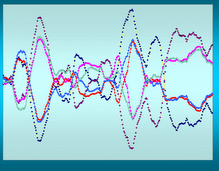I know - I get hold of an idea and I don't want to let it go but I was playing around this morning with a couple of filters and I had a thought on how to improve my Blow-Off Bottom set-up filter.
That filter as you probably remember only outputs stocks that meet the first two-thirds of the BOB set-up and it's up to you to watch for the third third to develop and perhaps use that to day trade (or start a new, longer-term relationship).
Anyway I added a constraint that said - and ATR(10) is less than ATR(10) 2 days ago and I back tested the modification.
The results are interesting enough on the surface -
Original BOB Set-up: 58% Win rate, 27.74% ROI
Modified BOB Set-up: 58% Win rate, 66.76% ROI
Apparently the ATR makes a difference and I'm going to leave it in - but this is the newsworthy part - when I looked at the net change over time here is what I found.
Original BOB Set-up: 4 day change = .34%, 30 day change 1.51%
Modified BOB Set-up: 4 day change = .80%, 30 day change 5.76%
That is amazing. Over double on the 4 day and nearly 4 times on the 30 day.
What this says, at least to me, is that an ATR that is high and then begins to decline is potent tool for the trader's tool box.
As always I tested the counter proposition just as a sanity check and here are the results from when I required the ATR to be increasing over the ATR of 2 days ago.
Win% = 54%, ROI = -6.28%, net change over 4 days = -.05%, over 30 days 1.44%.
That clinches the deal as far as I'm concerned - a decreasing ATR (= decreasing volatility) is better for your trading account than an increasing ATR (= increasing volatility).
Some months ago I wrote a post that provided an anecdotal indicator that when trying to choose between two stocks for a day trade and only having enough bullets or desire to trade one that you should take the one with the higher ATR. This is why. This tool will help you on all time frames. And maybe even if you do have enough to cover both you should put is all in on the one with the higher ATR.
That's your choice, of course - not an invitation to speculate in the Wall Street Casino.



